GREG HARRIS
HOW IT FEELS TO WIN AT WORK

60 YEARS OF BERKSHIRE HATHAWAY BEHIND THE BOOK CASE STUDY FOR PASSIVE INCOME UNO PROFESSOR CREATES OPPORTUNITY WITH OIL


60 YEARS OF BERKSHIRE HATHAWAY BEHIND THE BOOK CASE STUDY FOR PASSIVE INCOME UNO PROFESSOR CREATES OPPORTUNITY WITH OIL
Helping businesses make their greatest impact.

2025 Winner

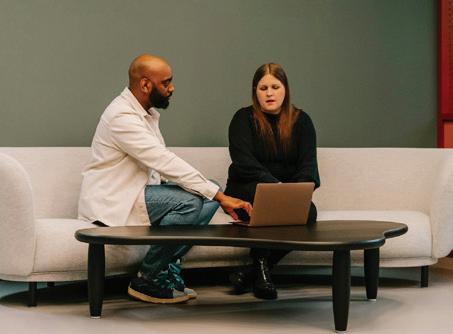



Horsepower Today delivers top fractional HR, Finance and Operational leaders, precisely when and where you need it. Why should you spend time and money on recruiting, salaries, benefits, and worse, turnover? Instead, gain a talented team that knows your industry at a fraction of the cost.
Services We Provide:


B2B Omaha is dedicated to empowering local CEOs and business leaders by delivering authoritative insights into emerging trends, visionary leadership, and economic indicators shaping our region. We strive to be the go-to resource for professionals seeking data-driven reporting on Omaha’s GDP, in-depth analysis of evolving market dynamics, and stories of the trailblazers who are setting the pace for growth and innovation in our community.
EXECUTIVE
CEO
Bill Sitzmann
EDITORIAL
contributing editor
Jen Litton
associate editor
Natalie Veloso
assignment editor
Isaac Nielsen
contributing editor
Jim Vokal
contributors
Kevin Coffey
Kyle Eustice
Dwain Hebda
Brandi Long-Frank
Lisa Lukecart
Holly McAtee
Jonathan Orozco
CREATIVE
creative director
Rachel Birdsall
senior graphic designer
Renee Ludwick
graphic designer II
Nickie Robinson

graphic designer I
Joey Winton
chief photographer
Sarah Lemke
photographers
Bill Sitzmann
Roger Humphries
Katie Anderson

SALES
executive vice president
sales & marketing
Gil Cohen
marketing &
growth strategist
Michelle Schrage
branding specialists
Francine Flegg
Sandy Matson
Kristen Springer
contributing branding
specialists
Greg Bruns
Tim McCormack
Dawn Dennis
senior sales coordinator
Alicia Hollins
sales coordinator
Sandi McCormack
digital advertising sales specialist
Travis Fisher
OPERATIONS
business manager
Kyle Fisher
ad traffic manager
David Trouba
digital manager
Luis De La Toba
distribution manager
Damian Ingersoll
publisher
Todd Lemke
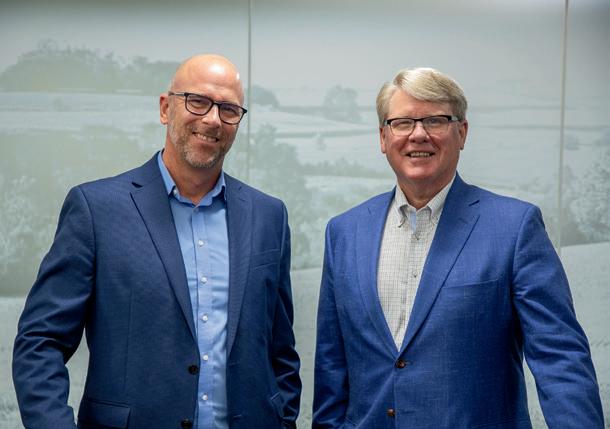
subscribe
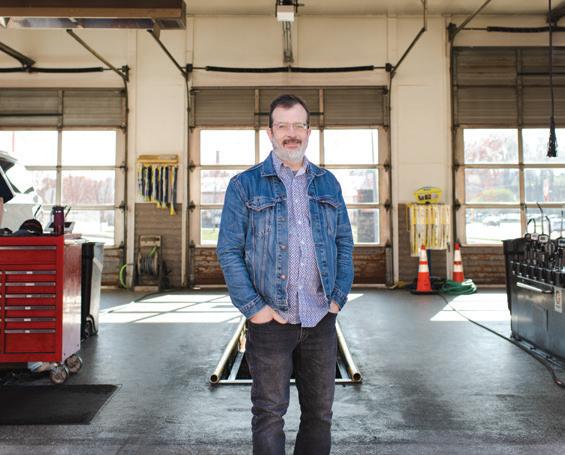

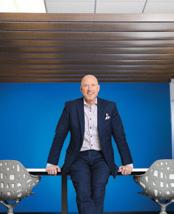
COVER Business leaders can empower teams by driving engagement. Greg Harris of Quantum Workplace offers insights in this month’s Human Resources story on page 32.
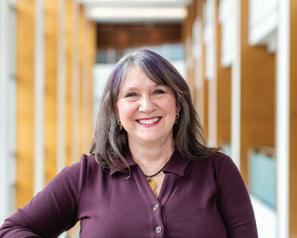
Nebraska does not have mountains or oceans. We also do not have the energy, resources, or tourism that afford other states the revenue opportunities that allow for a more competitive tax environment. And certainly, we do not have the population growth that can bring in ongoing extra revenue to reduce the tax burden for our Nebraska families and businesses.
One thing, however, is absolute in the policy world a state’s tax environment is directly tied to migration and growth. Research is clear that tax cuts are associated with an increase in the number of local firms. Moreover, as firms locate in areas with lower taxes, there is an increase in employment, wages, and rents. Policymakers should care about their state’s interstate migration patterns because of the effect of interstate migration on tax revenue, economic output, and economic growth over time.
It is clear from the 2021-2022 IRS migration data that there is a strong positive relationship between state tax competitiveness and net migration. Overall, states with lower taxes and sound tax structures experienced stronger inbound migration than states with higher taxes and more burdensome tax structures.
In 2023, the largest tax package in the country, and in Nebraska’s history, got over the finish line, lowering the top income tax rate to 3.99% over five years. Nebraska’s 2023 income tax reforms are beginning to bear fruit in the form of enhanced state tax competitiveness. So says the findings of Tax Foundation’s 2025 State Tax Competitiveness Index, a tool that assesses the competitiveness of each state’s tax code. Nebraska moved up from No. 30 in the 2024 edition to No. 24 in the 2025 edition.
The Great Plains region has become a hotbed of tax competition, as reflected in the new index rankings. Wyoming and South Dakota remain the top two states in the country for tax competitiveness. Missouri’s No. 13 national ranking is far better than average, and Iowa jumped from No. 33 to No. 20 from 2024 to 2025, thus leapfrogging Nebraska. Just like the recent outcomes on the football field, Iowa has the edge on Nebraska with previous moves to lower their income tax
rate to 3.9%. Fortunately, the Platte Institute and its partners have successfully defended against efforts to pause and roll back Nebraska’s scheduled income tax cuts.
The 2023 income tax reforms are indeed driving improvements to Nebraska’s overall ranking. Nebraska’s corporate tax has advanced to No. 20 in the country, while Nebraska’s individual income tax is No. 26. At No. 13, Nebraska’s sales tax continues to be a competitive factor of the Cornhusker code, and Nebraska’s unemployment insurance tax is highly competitive at No. 3 in the country. Yet Nebraska’s property tax ranks as one of the worst in the country at No. 45, holding back the states’ overall competitiveness.
Nebraska’s income tax rankings will continue to improve over the next several years due to rate reductions that are already scheduled. In addition, Nebraska needs to improve its individual income tax by eliminating its “convenience of the employer” rule that allows for double taxation of the income of remote workers. Further, Nebraska can improve its corporate tax through restoring full expensing for investments in capital assets, as it existed from 2018 to 2023.
Most people do not know that Nebraska is one of the few states that still imposes a capital stock tax, known in Nebraska as the Nebraska Occupation Tax. Capital stock taxes are a remnant of an era that pre-dates corporate income taxation. They directly disincentivize investments in the state by taxing the net worth of a business regardless of profitability. These taxes are complicated and generate minimal revenue, and should be an easy target for Nebraska policymakers.
Our tax structure is a major component in the decisionmaking of individuals and businesses, and a component largely within policymakers’ control. States that prioritize a lower tax environment reap the economic benefits that come with creating an attractive fiscal landscape where all individuals and businesses have the opportunity to thrive. B2B OMAHA
FROM THE GUEST EDITOR
Jim Vokal is Platte Institute’s CEO. He can be reached for story suggestions and pitches at Jvokal@platteinstitute.org. Or email editor@omahapublications.com.
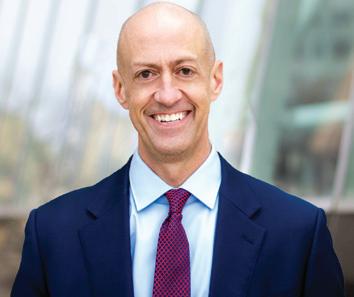








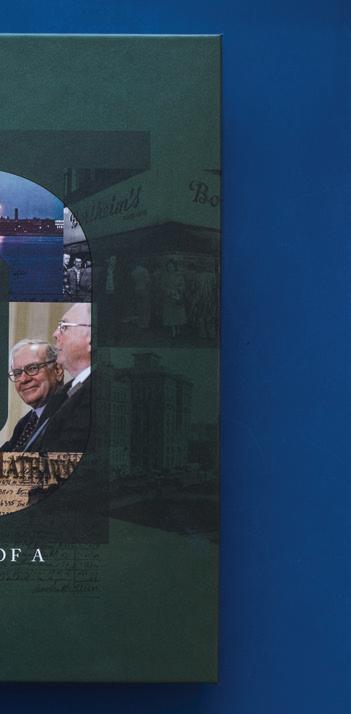
While thousands of investors from around the globe descend on Berkshire Hathaway’s annual meeting each year to hear legendary investor Warren Buffett speak, it was Carrie Sova who helped the meeting explode into what it is today. Sova, who functioned as the “Ringmaster” of the annual meeting from 2010 to 2017, took the reins of the meeting two years after joining the company.
When she did so, Sova never planned to become the company’s unofficial historian–but that’s exactly what happened. After a few years of coordinating logistics for the meeting, Sova was approached by Buffett with an idea. “[I asked Sova] to try her hand at putting together a lighthearted history of Berkshire. I gave her full rein to use her imagination, and she quickly produced a book that blew me away with its ingenuity, contents and design,” Buffett wrote in his letter
to shareholders back in February. That book, titled “Berkshire Hathaway Inc.: Celebrating 50 Years of a Profitable Partnership,” was offered for sale at the 2016 shareholders’ meeting.
A year after the book was initially sold, Sova left the company to raise a family, and now has three children–though she still remains involved in the occasional Berkshire event as an alumna. One such event, a Storm Chasers game last summer, reconnected Buffett and Sova. Buffett “brazenly asked her if she would do a 60th Anniversary issue, featuring Charlie [Munger]’s photos, quotes and stories that have seldom been made public,” he recalled in his letter. Sova immediately agreed, refusing any payment for her work on what Buffett has dubbed the “Charlie edition.” After several months of work, she had created “60 Years of Berkshire Hathaway,” a new publication that traces the evolution of the company into one of the world’s most admired conglomerates, with a special focus on Munger, who passed away in 2023 after serving as Berkshire’s vice chairman and Buffett’s longtime business partner.
But this book isn’t for sale on Amazon or at your local Barnes & Noble. It was scheduled to be sold exclusively at the Berkshire Hathaway annual meeting in Omaha, with 5,000 copies available on Friday afternoon and Saturday during the highly anticipated weekend.
For a few lucky donors, there was a rarer prize: 20 signed copies of the book, autographed by both Buffett and Sova, were offered through a charitable partnership with the Stephen Center, an Omaha-based nonprofit providing services to those experiencing homelessness. Eight of the copies were awarded prior to the meeting to the top eight bidders due to overwhelming interest in the books. The remaining books were offered at the annual meeting. In addition, Buffett, a longtime supporter of local causes, matched each book-securing donation of $5,000 or more.
“I don’t have proper words to convey, on behalf of all of the Stephen Center, our immense gratitude, appreciation, and also how excited we are to take this opportunity and turn it into real service, into real work that not only impacts those in need locally, but as part of a national dialogue, helping provide inspiration, if not a blueprint, on how to serve those experiencing homelessness,” Stephen Center CEO Chris Knauf said.
Founded to support individuals and families overcoming homelessness, substance abuse, and mental health challenges, the Stephen Center provides comprehensive services to those in need in Omaha. Its Pettigrew Emergency Shelter, Permanent Supportive Housing program, HERO (Health, Empowerment, Responsibility, and Opportunity) Program, and Donation Center combine to serve over 1,000 people each year, providing nearly 100,000 nights of lodging, 300,000 meals, and 60,000 volunteer hours. B2B OMAHA
For more information, visit https://stephencenter.org/buffett/

Wendy Wiseman came to Constellation Collective, previously Zaiss & Company, as director of marketing. Transitioning to owner and president in 2022, she is now the CEO of this local marketing firm.
When companies decide to use Constellation Collective’s services, how do they create and allocate their marketing budgets?
When meeting with clients, Wiseman explained how her firm begins the process. “We always ask right away what their business goals are. Usually this comes in terms of revenue in the year and number of customers, so it’s really all math. Marketing budgets tend to be between seven and 20% of a company’s revenue in a year,” she said. Additionally, Wiseman’s team discusses clients’ lifetime value of customers.
In the next steps of creative control, it can be difficult for clients to let a marketing firm take the reins of projects. “I really don’t like the phrase, ‘It’s not personal, it’s business.’ We are all human and we do weave our personal lives into our decisions. Even when a decision should be rational, it may not be. Maybe their job is on the line. Maybe they’ve been burned before by another agency, and it’s emotional to think that we will operate that same way,” said Wiseman. Building trust between firm and client is key to creating a good end product.
Wiseman expressed that she is kept up at night by what keeps her clients up. “We are able to empathize with them. Clients come to us with trust and faith to market their brand with their hard-earned money. I think all the time about not letting someone down because this is real, not just a game. It’s really a partnership that embraces what they’re trying to do,” she said.
It’s common to test a small amount of a product before purchasing. But companies, especially startups, often don’t see the result they are wanting when they put very small amounts of budgets toward marketing. This is not for a lack of marketing’s effectiveness; rather, there was simply not enough exposure to bring more customer traffic. “With all the other noise out there, marketing cannot be an afterthought. Startups should be spending more like 20% of their budget on marketing. You’ve got to market your brand, the benefits of it,” Wiseman said.
A fact to keep in mind when making marketing budget decisions is frequency of exposure. “When we were young in this business, three times frequency was all we went for. Now, the minimum is 14 times of someone seeing your ad or message before they act,” said Wiseman. With increasing barriers to entering saturated markets and increasing frequency of exposure needs, marketing may be more important now than ever.
Wiseman stressed how important it is to spread across as many platforms as possible. “It depends on the target our client has, but overall, it has to be an omni-channel strategy. Some demographics read print more often than others, and some publications are digitized to reach more audiences. You have to be in Meta to show them, and Instagram, and TikTok. You can’t tell what platform someone will be in when they have a precipitating moment to buy,” she said.
Another important aspect that companies tend to push to the back burner are websites, Wiseman said. “A lot of people build the website, set it, and forget it. Websites are living, breathing entities that we have to modify regularly, and that is part of the marketing budget. Companies say, ‘We already spent $50,000 to build a website, why do we need more?’ Because you just do,” she explained. As brands shift, customers need and deserve the most up-to-date version of that branding and the company.
CONT. PAGE 10


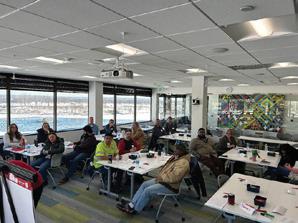
Are these important skills to develop in your managers?
These are just 3 of the 24 topics we cover. Our award-winning interactive leadership program changes behavior and produces measurable results.
If you don’t continue to develop your current leaders, you’ll be training new ones instead.
Call 402.399.9239 to see if we might be a right fit for you. We can also set up a complimentary session to see if we’re the right fit for your people.
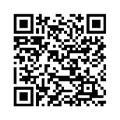




FROM PAGE 09
After companies have invested their budgets and time into various mediums, the big question still remains: How can marketing firms prove that their work is valuable and generating real customer draw? “With digital media, it’s easy and accurate to show clients what we see. The metrics of views, clicks, opens, are easy to share, and you can compare those numbers to what they’ve seen on their end. If they ask customers where they heard about the company, the customer might say that they were recommended it by a friend. Sure, word of mouth works, but how did anybody originally hear about the company? Hopefully, we are able to show how that friend had a chance to see a commercial or an ad for the company in the first place,” Wiseman said.
As the job of marketing reaches its end of bringing people to the door, Wiseman makes sure to point out that marketing alone cannot make a customer buy a product. That’s why her team additionally involves themselves with their clients’ sales teams.
“We as a firm can then say, ‘We’ve driven all these people to your site, call center, or store.’ Once they are in the store, how are they being sold? That’s how you pull people down the funnel to that final sale,” she said. This ensures that the marketing strategies her team is supplying align with the sales approaches of their clients.
Marketing is often the first part of budgets cut out during difficult times. Wiseman believes this is a mistake. “The time to not hold back with marketing is an economic downturn,” she said. “A lot of companies think the opposite. Actually, the time is now to make sure that you’re seen, and that consumers know you’re alive and well.” B2B OMAHA
For more information, visit c2stars.com.
STORY: JONATHAN OROZCO DESIGN: RENEE LUDWICK
The city of Omaha accounts for nearly 25% of Nebraska’s population even as the state reached over two million residents in 2024. It’s less surprising that the Omaha-Council Bluffs Metropolitan Statistical Area reached one million residents, which was reported earlier this year. This area, which includes Douglas, Sarpy, Washington, Cass, and Saunders counties in Nebraska, and Mills, Pottawattamie, and Harrison counties in Iowa, is Nebraska’s cultural and economic capital.
Douglas County has remained the most populous county in Nebraska since 1860, according to data collected and presented by the Center for Public Affairs Research at the University of Nebraska at Omaha.
Omaha itself has consistently grown, starting as a small town of 1,883 people in the 1860s to a city of nearly half a million sitting at 486,051 residents according to the 2020 census. Recent estimates from 2023 show a small decline of 2,716 people to 483,335, likely due to trends related to the COVID-19 pandemic, which saw major cities like New York City and Los Angeles lose population to smaller, more rural areas. This represents a 1.7% decrease of Omaha’s population, which will likely rebound considering Nebraska’s overall growth.
Over the past several decades, Douglas County has seen steady growth in median household income. In nominal dollars (meaning income not adjusted for inflation), median income rose from $6,408 in 1960 to $65,788 in 2020. When adjusted to February 2025 dollars, these figures become $69,076.94 and $81,427.51, which is a 17.88% growth of purchasing power.
Starting in the 1960s, median household income grew steadily, but has fallen and somewhat recovered since 2000. From 2000 to 2010, purchasing power fell by 16.33%, but from 2010 to 2020, it recovered by 10.65%. From 2000 to 2020, income fell by 7.42%. The fall in 2010 can likely be explained due to its proximity to the 2008 global financial crisis and the Great Recession, while the overall fall in 2020 is likely influenced by the start of the global pandemic.
While historic population and income in Omaha and Douglas County have consistently trended toward growth, policymakers and investors should consider recent trends in population movement and work preferences in order to attract and retain talented citizens who could increase the area’s socioeconomic and cultural capital. Omaha has been the largest city in the state of Nebraska throughout its history, and with proper planning, can continue to be an economic hub in the future.
The demographic and economic data for this article was manually scraped and tabulated from multiple sources, including the Federal Reserve Bank of St. Louis’ Federal Reserve Economic Data database, the United States Census Bureau, IPUMS USA (Integrated Public Use of Microdata Series), a project at the University of Minnesota providing U.S. census and other data, and the Center for Public Affairs Research at the University of Nebraska at Omaha special thanks to assistant director Morgan Vogel, Ph.D. Inflation adjustments were calculated using the CPI calculator provided by the U.S. Bureau of Labor Statistics. B2B OMAHA
ACCORDING TO THE U.S. CENSUS BUREAU, THE POPULATION OF THE GREATER OMAHA METRO SURPASSED 1 MILLION PEOPLE IN 2024. IT GREW TO AN ESTIMATED 1,001,010 IN 2024 FROM AN ESTIMATED 984,548 IN 2023. IN CONTRAST, THE U.S. CENSUS BUREAU ESTIMATED THE CITY OF OMAHA’S POPULATION AT 483,335 IN 2023.




In Omaha’s busy architecture industry, there is a lot of work, so finding qualified talent and retaining it can be tricky. With rising market volatility also in play in recent months, businesses are navigating through neverbefore-seen challenges.
“We watch day-to-day. Are our clients still going to spend? Are they worried about the cost of the dollar right now? Materials will cost more tomorrow than they do right now. We need qualified people…you take on people not knowing what tomorrow is going to bring,” said Kurt Cisar, principal architect at Holland Basham Architects.
To not be constantly worried, Cisar focuses on today.
“We try to control what today is, and what we can do with that is know that we need qualified people, and we need good talent,” he said.
The latest talent plan they’ve implemented is a rather robust intern development program where they’ve broadened their recruiting efforts to a wider range of regional universities.
Students are immersed in the practice from start to finish. They don’t just hop on a job and help out, and then go back to school after summer’s over. “They’re test-driving us, just as much as we’re test-driving them,” Cisar said.
This thorough practice nets continual growth turning about half of their summer interns into full-time employees each year.
HBA’s architects and designers work in the heart of Midtown and are celebrating 35 years of deploying a data-driven approach to architecture and design. Recent projects include the Applied Underwriters’ corporate headquarters, Metropolitan Community College’s Fort Omaha Campus, and Creighton University’s Sophomore Residence Hall.
HBA is part of a team working on the Crossroads redevelopment project for the former Crossroads Mall site that includes features of mixed-use development, an entertainment complex, a central green space, public spaces, a residential component, parking facilities, and more.
Cisar, who has been with HBA for 20 years, ensures that each new project follows a well-executed strategy toward a unified vision. His blended project experience serves him well to meet clients’ needs.
He worked on large projects like Turner Park’s Midtown Crossing, and now the transformative Crossroads fusing downtown with West Omaha.
“It’s really exciting to be doing something at such an important intersection in our city,” Cisar said. “You know, I remember as a kid in 1997 when the Huskers won the National Championship, and I drove down with my folks to 72nd and Dodge, and everybody was just having a party right there.”
He notes Omahans’ fond memories of visiting the Brandeis store at the Crossroads location in the 1960s and 1970s. “That was the edge of the city back then. It was also one of the first indoor malls in the country,” he said.
HBA is at their best when they help solve problems for companies embarking on a mixed-used development project. “They’ve got some rough goals, but they don’t necessarily know how to get there,” Cisar said.
At this stage, the team’s data-centric approach reviews past projects for new insights and looks at how other developments build themselves based on typical density, he said. HBA’s attorneys then provide a better understanding of their return on investment.
“If you have 300 units of housing, and 300,000 square feet of office space, and 100,000 square feet of retail, what’s the return on the ground? That’s what you’re chasing after,” Cisar said. His leadership in design and master planning initiatives is built on years of a steady devotion to dynamic architecture and keeping a firm grasp on the changing industry trends.
In recent years, HBA opened a new office in Denver, where they focus on machine learning, AI, virtual reality, and web-based management software to bridge communication gaps. They boost efficiency and work culture through use of a technology-driven infrastructure.
Holland Basham’s founders, Tim Holland and Keith Basham (now retired), taught employees how to treat people the right way and to listen to people, Cisar said. “Not just clients but our own staff, too… We listen for what’s kind of the in-between and what’s really triggering the staff. What is the culture of our office and what does it need to be?”
Relationships are built by uncovering clients’ pain points and addressing them each in a unique way. “It doesn’t always have to be us. Maybe we can point somebody in the direction of another partner of ours, or a consulting individual that we know will service them better or can help them,” Cisar said. This common sense approach mirrors how Holland Basham’s services began.
“What Tim and Keith bestowed upon us was ‘just listen, do the right thing, be moral, be ethical,’” Cisar said. “Do the right thing and the benefits will come back to you.’” B2B OMAHA
Visit hollandbasham.com for more information.
WE TRY TO CONTROL WHAT TODAY IS, AND WHAT WE CAN DO WITH THAT IS KNOW THAT WE NEED QUALIFIED PEOPLE, AND WE NEED GOOD TALENT.
-KURT CISAR
STORY: ANNMARIE MARLIER, PH.D
PHOTO: SARAH LEMKE
DESIGN: RENEE LUDWICK
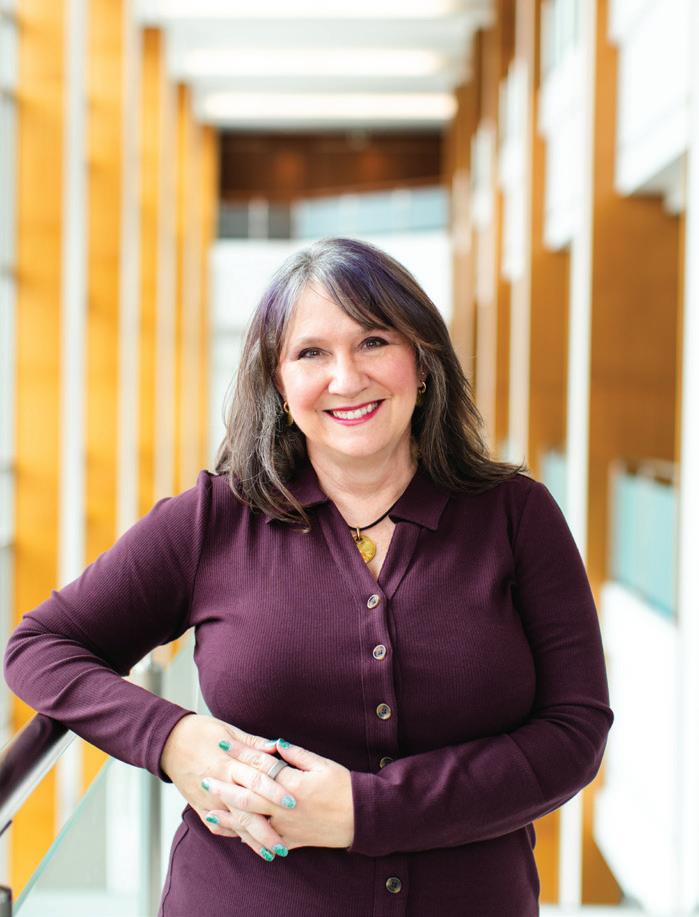
For those of us of a certain age, the words “I’m sorry, Dave, I can’t do that,” strike fear in our brains as we recall the artificial life form Hal 9000 from the 1968 movie, “2001: A Space Odyssey.” For others, the phrase “Do you want to play a game?” from the 1983 movie, “WarGames,” conjures up excitement (or maybe fear) when the main character begins playing the Global Thermal Nuclear War game. These days, just mentioning artificial intelligence invokes strong emotions ranging from fear to excitement, as we forget that AI has been with us for over 50 years, just in different forms.
Generative AI is the newest and most advanced form of AI, but there are myths and misconceptions about what it is and can do. Before we dive into the ethics of AI use in business, first and foremost, we should remember that AI is a software program. AI is only as good as the data programmed into it; as such, it is subject to biases, misinformation, and even “hallucinations” (where AI makes up answers when it cannot find an answer). So, how do we use AI ethically in business practices?
First, put things into perspective. AI is not sentient and does not learn the same way that adults do. AI will not take over your home; it won’t inherently replace your job or make you a better team member, and we already use AI more frequently than you think. For example, Grammarly is an AI platform for writing support, and several colleagues of mine use Grammarly to grammar check ChatGPT (another AI platform), which is notorious for grammatical errors.
Second, ethical AI use depends on the involvement of the people in the AI research, development, testing, implementation, and assessment processes. For example, at a panel discussion about regulating AI held by the Business Ethics Alliance in February, Jack Horgan, shareholder and attorney at Koley Jessen, shared that, assuming people are ethical, when humans are out of the AI process loop, the highest ethical risk is present. The more involvement by ethical people, the more ethical risk declines. Humans over the AI loop provide only moderate ethical risk, while those in the AI loop present the lowest ethical risk to an organization.
Our own mindsets are especially critical to successful AI use, and sometimes these mindsets can get us into trouble. An attorney used ChatGPT to prepare a legal brief and faced sanctions when it was discovered that several of the case citations were fabricated, and the attorney did not check the accuracy of their inclusion. In a separate case, several issues arose when a robot lawyer was scheduled to argue cases in traffic court. Job candidates are increasingly cautious about AI use in hiring practices. Even in my own career, I ran into AI issues when using AI software for hiring. I almost overlooked a candidate I eventually hired because her application was placed into the delete area when her near-perfect resume did not include enough keywords used for screening. Additionally, talking to a “blank” screen when recording preliminary interview questions can be nerve-wracking and decrease interview performance.
At the same panel discussion, Laurel Oetken, the director of Tech Nebraska, noted that traditionally, Nebraska has a risk-averse culture, which explains the hesitancy to “dive in” and quickly adopt AI technologies. In a workforce shortage, this hesitancy to engage with AI and unclear and developing regulations might continue to impact current workforce availability.
Third, the climate of ethical regulation for AI use is rapidly changing. In 2023, former U.S. President Joe Biden issued an executive order calling for caution and ethical use of AI technology. Recently, U.S. President Donald Trump called for federal agencies to name a chief AI officer and move forward with AI technologies to remain competitive in global technology and innovation. The European Union recently completed its Omnibus Regulation Act concerning data privacy and AI. The EU has very different data privacy laws from those of the United States. Data privacy laws in the EU generally favor the individual, while data privacy laws in the United States generally favor the organization. This impacts how AI can ethically gather and use data. Industries involving science and technology (which rely on the ability to “push” boundaries of knowledge and practice), creative and content-driven industries (where copyright laws cannot keep up with AI), and small businesses (which may not have the capacity to utilize or understand the implications of AI use entirely) are most impacted by AI use.
Fourth, we have general ethical expectations for organizations’ AI use. A survey posted on LinkedIn by The Carnegie Council for Ethics in International Affairs asked people if it is ethical for someone to create content using generative AI without disclosing that generative AI was used; 81% of respondents said no, it was not ethical not to disclose when generative AI was used to create content. Even Meta started labeling AI imagery on their platforms, albeit briefly. Frequently mentioned AI ethics include transparency, impartiality, accountability, reliability, security, and privacy. Key questions to ask ourselves about ethical AI use include:
AI IS ONLY AS GOOD AS THE DATA PROGRAMMED INTO IT; AS SUCH, IT IS SUBJECT TO BIASES, MISINFORMATION, AND EVEN “HALLUCINATIONS” (WHERE AI MAKES UP ANSWERS WHEN IT CANNOT FIND AN ANSWER).
-ANNMARIE MARLIER, PH. D.
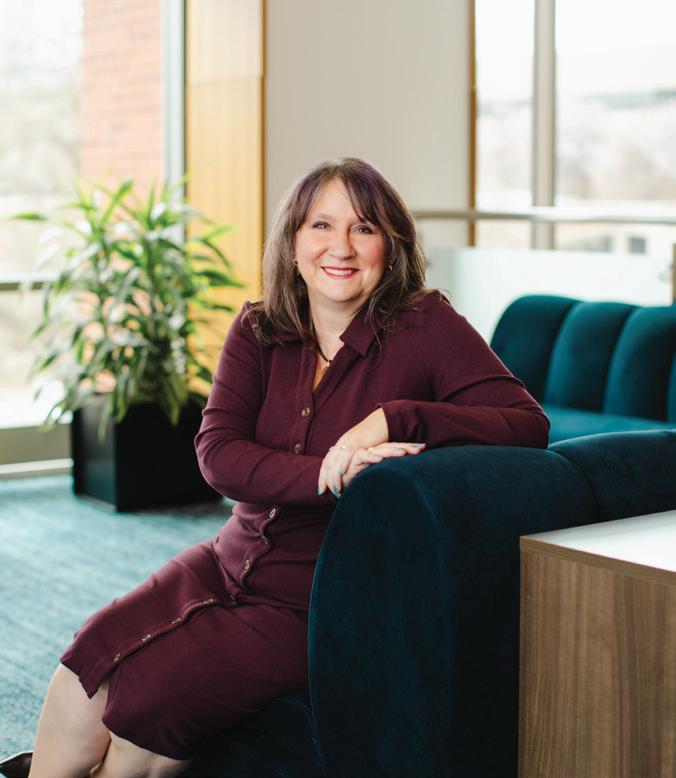
1. What are the benefits and challenges of using AI?
2. What are the costs of using AI, and how much time does using AI save? Consider time spent on correcting potential AI errors.
3. What are the biases and/or discrimination aspects organizations risk using AI?
4. Is AI use as planned ethical? Why or why not?
5. How much risk are you willing to take on when using AI in your organization? Is AI use worth the risk?
6. At what point is the human critical and irreplaceable?
Why should executives care? The ultimate responsibility for AI implementation falls to senior executives. LaShonna Dorsey, executive director of the Nebraska Tech Collaborative and Aksarben Scholarships & Internships at the Aksarben Foundation, notes, “AI isn’t a trend; it’s here to stay, and it’s a leadership responsibility. From automating your team’s work
to enhancing and accelerating decision-making, its value depends on how intentionally and strategically it’s applied.”
Framed against a quadrant matrix of doing the right thing for the business (even though it might not be ethical) and doing the right thing ethically (although it might not be the best for business), ethical decisionmaking to use AI in organizations is complex. AI is the first general-purpose concept in decades that affects almost every aspect of an organization. At the Business Ethics Alliance panel, Horgan compared AI advancement to the advent of discovering something akin to “nuclear” technology, needing to ensure guardrails are in place during the emerging stages of the newer technologies while balancing human life and safety with a risk of non-compliance with regulatory policies.
Dr. Kathy Meier-Hellstern, director of Google’s Responsible AI Department, speaking at a Business Ethics Alliance event in August 2023, reminded us that:
The responsibility to develop, program, and implement appropriate AI uses lies solely with human beings.
As human beings, we bring our thoughts, knowledge, perceptions, and feelings into whatever context we encounter.
Context is critical to assimilating new knowledge, especially for adults, and it determines how we will act using that knowledge in the future.
The bottom line? If we want generative AI to be used ethically and responsibly, it is up to us as human beings to program generative AI models to do so.
Compare her perspectives with this one:
“AI can be used as a tool to assist in determining ethical behavior, but the determination of what is ethical ultimately relies on human judgment and values. AI systems can be programmed to follow ethical guidelines or principles, and they can be used to analyze complex ethical dilemmas and provide insights. However, AI lacks the ability to make inherently ethical judgments without human input. It can only process information based on the data and instructions it has been given.” The quote’s author? ChatGPT. Now, that is insightful AI. B2B OMAHA
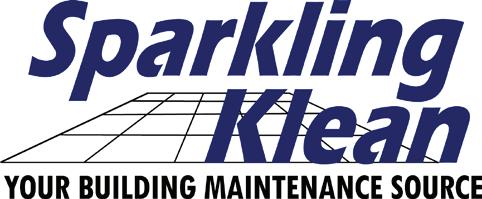



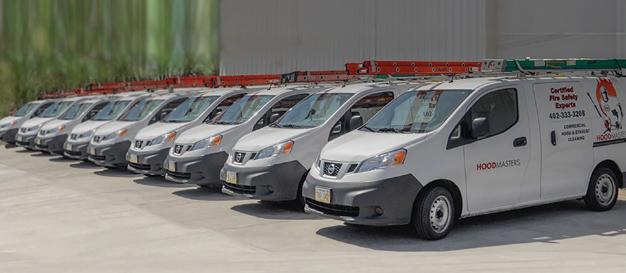
- Meghan S.

On her first day as an agricultural communications intern, Chloe Rogers walked into the Aksarben Foundation wearing black slacks, a pink shortsleeved sweater, and white Nike Air Force 1 shoes. The clothes fit loosely, since Rogers raided her mother’s closet. Her last employment with Flying Change Farm meant the 20-year-old had few options in office attire.
Rogers never wore the sweater again possibly not the best decision on a hot June day, anyway. The intern completed one year of undergraduate studies at California Polytechnic State University, majoring in Agricultural Communications with a minor in Dairy Science. However, she still felt unprepared for a realworld office scenario. Thoughts raced through her nervous mind, and Rogers wondered whether she would know what to do and how to do it. Luckily, professional mentors guided her, and she even experienced her first “work trips,” where she photographed and filmed farms in Valentine and Brewster, Nebraska.
WHO
SERVE AS A COACH, A GUIDE, A SAFE SPACE TO BECOME UNSTUCK.
-LASHONNA DORSEY
“A great mentor can make or break an internship. The value is having a person who can serve as a coach, a guide, a safe space to become unstuck,” said LaShonna Dorsey, the executive director of the Aksarben Foundation’s Nebraska Tech Collaborative and Scholarships and Internships.
Dorsey recalls her internship days as an IT Helpdesk Specialist with Gavilon Group, LLC, where a mentor from another department strengthened her confidence. She understands the value of businesses linking with talent and co-chaired with the University of Nebraska at Omaha’s Internship Advisory Committee.
The Aksarben Scholarships and Internships initiative ensures STEM interns receive meaningful and careeraligned opportunities that foster a stronger future for Nebraskans. It partners with the Teammates Mentoring Program and community colleges across the state, including Iowa Western Community College, to offer scholarships for STEM majors. The initiative claims that “students who complete two internships in Nebraska are more likely to start their careers in Nebraska, strengthening Nebraska’s workforce in the long term.”
CONT. PAGE 22




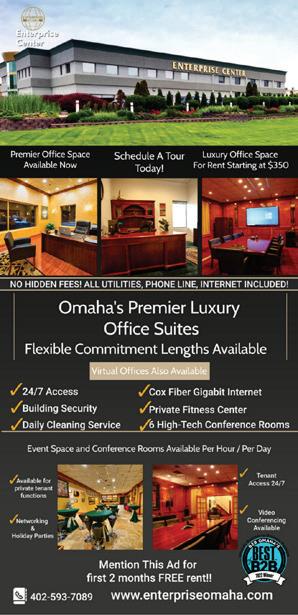

Internships do pay off after college. LinkedIn reported that 22.9% more college graduates in 2022 who pursued an internship landed a fulltime position within six months compared to their non-internship peers. Unlike the older days when interns fetched coffee, placements have become competitive and consequential in recent years, with undergraduate applicants on the Gen Z career platform Handshake surging 7% from 2023 to 2025.
Bo Jones, the founder and co-owner of Tru-Built Construction, believes the solution to recruiting a younger generation like Rogers’ resides in how businesses approach the process. He created the Career Pathway platform, built by a Nebraskabased engineering team, to connect students seeking employment and educational opportunities through videos rather than pamphlets.
“It’s the TikTok generation. If you don’t engage them at that level, you lose them. They are not going to read three pages about what it means to be a carpenter,” Jones said.
High schools and colleges have access to internships, apprenticeships, and job shadows at the touch of their fingertips to bridge the gap between employers and employees. Options for Nebraskans and other states have multiplied, with over four hundred businesses adding content to the site.
Dorsey hopes businesses take advantage of the Intern Nebraska Grant program (InternNE), which provides financial assistance after hiring an intern.
“It’s fun getting into this internship space,” Dorsey says. “Nebraska has some great talent. I want to help those candidates find the right jobs.”
Jones collaborated with the Aksarben Foundation and the Lincoln Partnership for Economic Development (LPED) “to expand access to internships and strengthen the talent platform for Nebraska employers,” as InternNE mentions. He said he thinks internships can help students decide on career options, recalling an accounting intern who changed her major after realizing bookkeeping didn’t suit her.
The Career Pathway site offers valuable resources, providing elevated internship prospects, including a link to InternNE. His platform also offers career exploration surveys that center on employees’ interests to match with elevated employment prospects. Jones believes it’s better than a job search engine like Indeed, which used to cost him $1,500 a month with a lack of quality candidates. Even the older generation can utilize the website, and Jones has seen an uptick in eligible employees for his construction company.
Dorsey also co-hosts the Internship Success webinar series alongside Merrick Brtek, director of workforce development at the Greater Omaha Chamber. It guides interns on what to expect on that first day, how to make a good impression, and offers advice on orientation.
“I hope people continue to find great internships in our community,” Brtek says. “Omaha wants our talent to find success and growth here.”
It may have benefitted Rogers before her summer internship. But through the process and with mentor guidance, the intern learned to speak up for herself during meetings, communicate effectively across departments, and present her ideas to experts. The internship, a paying gig at $17 an hour, transformed into a part-time remote opportunity once summer ended.
Currently, Rogers works only five hours a week remotely due to her full school schedule that includes tractor driving, plant science, and podcasting. The internship provides her with hands-on experience related to her major, enhancing her resume and boosting her marketability.
“It’s been a great experience. I have grown a lot professionally over the last nine months,” Rogers said. B2B OMAHA
For more information, visit internNE.com.


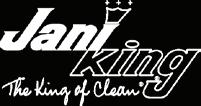







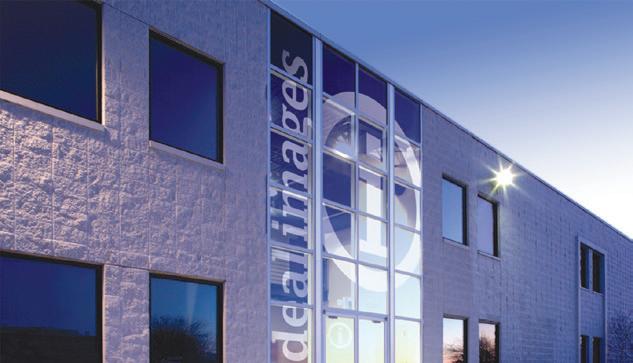
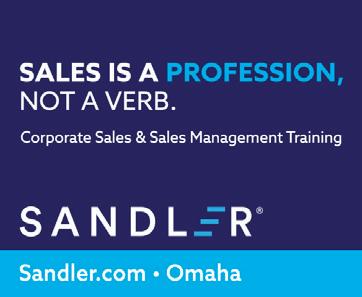

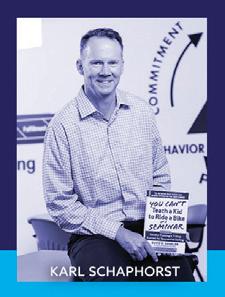

STORY: TIM TRUDELL
PHOTO: SARAH LEMKE
DESIGN: RENEE LUDWICK

Those who can, do. Those who can’t, teach. Dr. Dale Eesley crumpled up that old saying and tossed it in the garbage. The University of Nebraska at Omaha entrepreneurship professor practices what he preaches and in impressive style, buying an ailing business and quickly making it profitable.
With no interest in being a department chair, Eesley knew he’d max out his promotion opportunities as a professor, so he wondered about his future. He decided to buy a business. But he also knew he didn’t want to spend all his time between the university and his commercial venture.
Eesley created the Center for Innovation, Entrepreneurship and Franchising at UNO in 2008, serving as director, after spending time as a professor at the University of Toledo in Ohio.
Learning that the Insta-Lube oil change garage at 5802 Center Street was available, he jumped at the chance to buy it. The problem was that he knew nothing about changing oil.
His ownership of Insta-Lube became a case study in passive income earning money with minimal participation. While active income is derived from running a business, passive income can be earned from investments, rental properties, or, as in Eesley’s case, having someone else actually manage the business.
“What did I know about running an oil shop?” he said. “I knew I couldn’t be there to fix a problem, so I really had to have a partner. But one thing I’ve learned is being partners in business is really tough, and I hear more horror stories than I hear happy endings.”
Rather than develop a traditional partnership, Eesley thought he’d operate Insta-Lube as a business flip. He and the partner would run Insta-Lube together, and after three years, Eesley would sell it to him. Eesley needed a partner who would be motivated to run the business efficiently, knowing he’d one day become the owner.
“I finally found a guy who was a veteran, and had a nice, sweet family,” he said. “He had a pleasant smile and was a nice guy. So, we went into business together.”
Insta-Lube was in bad shape when they took over, Eesley said. The previous owners once had four locations around Omaha. But poor management skills caused them to close three of the shops, he said. Loosely managing the lone garage, the fatherson team–more son than father at that point–left it running on fumes, Eesley said.
Eesley and his partner took over the sickly enterprise, ready to test the entrepreneurship educator’s ideas for creating a successful investment without actively participating in the day-to-day operations.
“I’d pop over once or twice a day to say hi,” Eesley said. “I’d sit here and do the bills occasionally, but he really ran the floor and hired all the people. That went pretty well.”
CAN I LIVE WITH THIS BEHAVIOR AND ENCOURAGE THEM TO DO BETTER OVER TIME? IT’S PROBABLY CHANGED ME A LOT. I LEAD WITH EMOTIONS A LOT, NOT BEING EMOTIONAL, BUT SAYING, ‘IF I DO THIS, HOW WILL IT MAKE THEM FEEL FIRST?’ AND IF I TRY AND WORK ON GETTING THAT RIGHT, THEN I CAN CREATE POLICIES AND ENFORCE THEM LATER IN A WAY THAT WON’T MAKE THEM FEEL UNFAIR OR ATTACKED.
-DR. DALE EESLEY

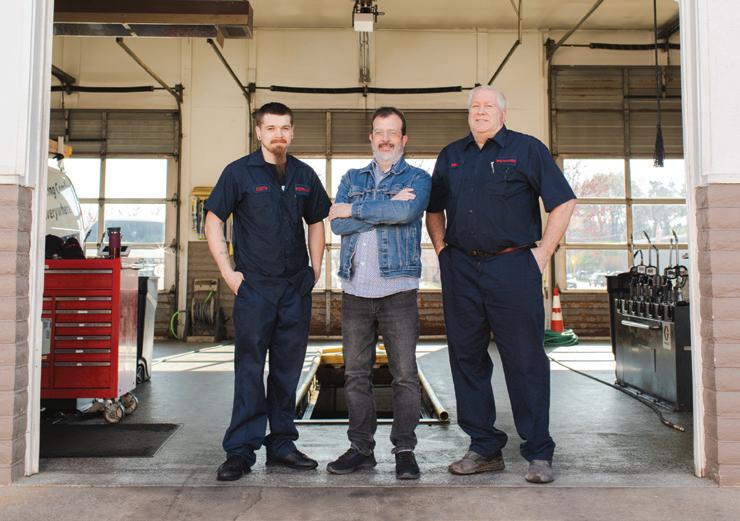
Initially, the partners needed to clean up the facility. The previous owners stacked boxes in every room, from floor to ceiling, with little room for people to maneuver, Eesley said. They cleared out unnecessary items, returning the break room to the employees.
Finishing a complete renovation, the three-bay facility featured a new paint job, oil filters for almost every make of vehicle they could possibly service, and a computer-based record-keeping system. Insta-Lube looked like a new business. Even the employees had their own uniforms instead of wearing oil-stained personal clothing.
But customers weren’t flocking to the shop for oil changes. It didn’t help that Google reviews listed a litany of poor ratings, Eesley said.
“Do you know how many 5’s it takes to overcome a single 1-star?” he said. “Try 26.”
Eesley’s entrepreneurial skills kicked in. Reaching out to every person who had given Insta-Lube a 1-star rating, he offered a free oil change. If they liked the service, all he asked of them was to consider returning for future service opportunities, Eesley said.
WHAT DID I KNOW ABOUT RUNNING AN OIL SHOP? I KNEW I COULDN’T BE THERE TO FIX A PROBLEM, SO I REALLY HAD TO HAVE A PARTNER. BUT ONE THING I’VE LEARNED IS BEING PARTNERS IN BUSINESS IS REALLY TOUGH, AND I HEAR MORE HORROR STORIES THAN I HEAR HAPPY ENDINGS.
-DR. DALE EESLEY
“We now have a 4.9 rating on more than 1,300 reviews,” he said.
Eesley’s concern about partnerships ending poorly came to fruition. While on a summer vacation in Maine in 2022, he learned his partner–rather than honor their deal to take over the business–closed the oil shop and took all of the employees with him as he opened another oil change business a few miles away.
Eesley discovered the man had planned to open his new business for more than a month. He even used Eesley’s business model for the new garage.
“I came home to an empty shop that I didn’t really know how to run on the floor, because that was his job,” Eesley said.
Starting over from scratch, he searched for a new manager, someone he believed he could trust. He was impressed with the number of qualified people who had experience managing oil shops. Seeking the right person who could step in and hire and train a new staff, Eesley struck gold.
“I reopened after two weeks and actually had the best year, even with a two-week gap, and things have continued to grow since then,” he said.
Knowing he likely had a legal case against the former partner, Eesley took the higher path and moved on.
“That’s not really my style. My style is more like, unless it’s truly injured me...” Eesley said. “I was just like, ‘Well, the best revenge is success, and I’m just going to do the best I can to manage this place here.’ I just left him alone.”
The betrayal taught Eesley a valuable lesson–former employees thought of him as an investor, not as management. Abandoning the passive model momentarily, Eesley took a hands-on approach with his Insta-Lube business, hiring new employees. He was now the boss, Eesley said.
Taking on the general manager role led Eesley to work with people much different than the academicians at UNO. It was eye-opening.
“I’ve learned to work with employees who oftentimes have complicated lives, which wasn’t a thing for me,” Eesley said. “I work with PhDs all day. And now, working with GEDs and second-opportunity employees and people who, if they stay here very long, there’s usually a reason they don’t succeed in other jobs that have strict rules and/or enforce them, and so I’ve learned to be way more empathetic.”
Rather than discipline a person for tardiness or attendance, Eesley explores situations more deeply.
“Can I live with this behavior and encourage them to do better over time?” he said. “It’s probably changed me a lot. I lead with emotions a lot, not being emotional, but saying, ‘If I do this, how will it make them feel first?’ and if I try and work on getting that right, then I can create policies and enforce them later in a way that won’t make them feel unfair or attacked.”
Employees experience a plethora of situations that impact their lives at home and at the shop, Eesley said. One employee’s father died, and he had provided security for the family. Another ran into legal problems, so Eesley helped him find an attorney.
Despite experiencing issues with the oil shop in 2022, Eesley bought Trede Electric in Ralston, a 10-employee business that he also passively owns. He hired an experienced electrician to manage the business.
Eesley acknowledges that what he teaches in the classroom has been sharpened by his engagement with the business community.
Among programs he’s created at UNO include a Big Idea Pitch Contest, Maverick Business Plan Contest, and a Midwest entrepreneur conference, where he brings in nationally-known speakers.
Eesley’s Collegiate Entrepreneurs Organization left a lasting impression on Kyle Tut, who, along with business partner Matt Ober, founded Pinata, a cloud-based crypto file storage company. UNO’s entrepreneurship program provided the basics for him to create his own business, Tut said.
“I always wanted to start my own company,” Tut said. “I didn’t want to be a day trader. So in 2018 we started Pinata, with the idea that crypto companies needed a different way of managing files, and Pinata was that company.”
While Eesley didn’t want to be tied to a desk as a department chair, spending the day in meetings, on phone calls and swimming in paperwork, he finds himself sitting behind a desk at Insta-Lube, handling customer calls and dealing with employee issues.
“It’s mine. My problem,” he said. “I’m not working at a desk solving somebody else’s problem. I think that’s the big difference. I’m usually here for 30 minutes.”
B2B OMAHA
STORY: CHARLIE LITTON
PHOTO: SARAH LEMKE
DESIGN: RENEE LUDWICK
Chad Johnson didn’t set out to solve a massive safety issue facing the agriculture industry. He was looking for a fun way to teach school kids workforce skills.
That educational project soon became Grain Weevil a disruptive robotics startup that solves one of the most dreaded agricultural problems, grain bin entrapment.
Grain bins, hulking cylinders of galvanized steel and conical domes, pepper our Midwestern landscapes near and far. To passersby, these prairie sentinels seem harmless enough.
Inside, beneath the thousands of metric tons of grain, a corkscrewing auger pumps the grain out though a discharge pipe like a spiraling escalator. Everything usually goes as planned… until it doesn’t.
Voids form. Wet grains can clump in massive chunks or stick to the walls, forming dangerous ledges. Eventually, the discharge auger goes hungry, and the grain stops flowing.
Too often, a worker jumps in to break up the clumps and get the grain moving again.
“There are warning signs all over saying not to go in,” said Nebraska farmer Zach Hunnicutt. “But the reality is, to manage the grain in the bin, you have to physically manipulate it…It’s the most dangerous thing we do on a grain farm.”
In four seconds, a worker can sink to their knees. There might be just seconds to pull them out before they asphyxiate, essentially drowning in grain.
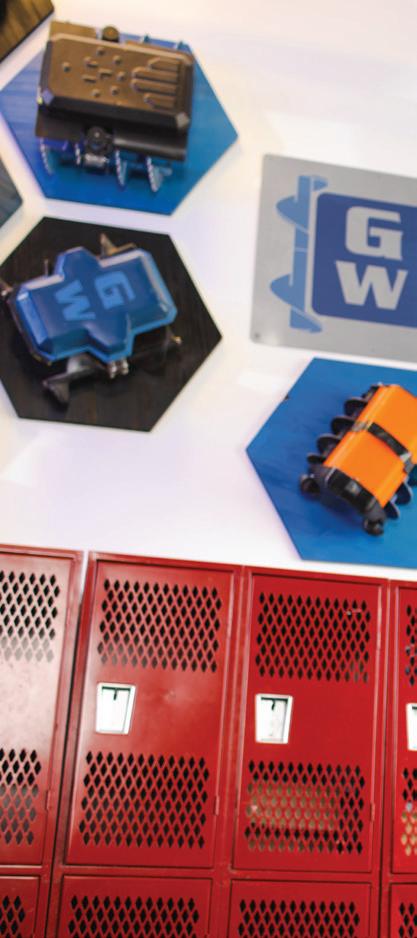
In 2023, the CDC reported 27 grain entrapments, more than half (15) resulting in death.
“Every single farmer you talk to has a story,” said Johnson, CEO and co-founder of Grain Weevil, “whether it’s someone in their family, an uncle, a cousin, a nephew, someone in their community.”


Hunnicutt has heard plenty of the stories, too. And as a longtime friend of the Johnson family, he knew they were working on a robotics project.
“A day after spending all day in a hot grain bin,” Hunnicutt said, “I said, ‘I need you to make a robot so I never have to go in a grain bin again.’”
It was an interesting challenge. They hadn’t even seen the inside of a grain bin, but they knew how to build robots.
Initial prototypes failed. Wheels didn’t work. And treads, like those on a snowmobile, weren’t any better.
“It was like this epiphany,” Johnson said. “You use augers to move grain. Maybe we should use augers to move our robot.”
Their startup idea was soon accepted into Invest Nebraska’s incubatoraccelerator program, The Combine.
“You can tell when there’s a real solution to a real problem that exists,” said Invest Nebraska CEO Dan Hoffman. “When they explained their idea, it was this ‘aha’ moment.”
Invest Nebraska, the state’s capital investment firm looking for homegrown startups, later helped kick off Grain Weevil’s seed stage round. Invest Nebraska’s early investment of $250,000 led to a $1.5 million seed round that funded further development and expansion.
By March 2022, they had their first functional prototype, a rectangular box nearly the size and shape of a large briefcase. In place of wheels, the robot
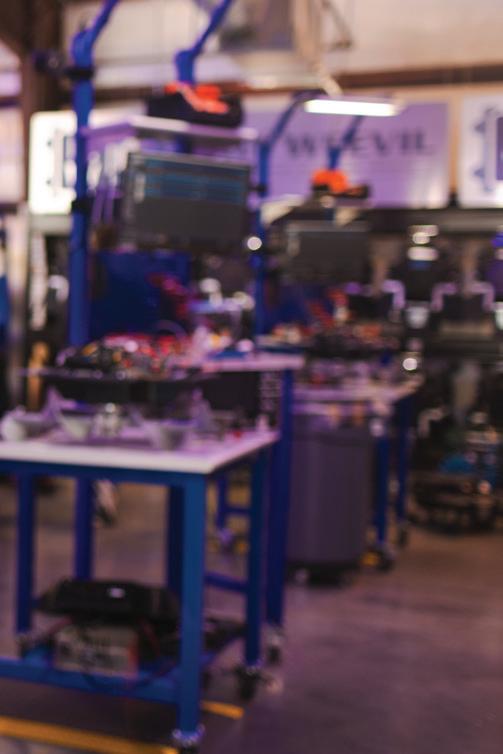
THERE ARE WARNING SIGNS ALL OVER SAYING NOT TO GO IN. BUT THE REALITY IS, TO MANAGE THE GRAIN IN THE BIN, YOU HAVE TO PHYSICALLY MANIPULATE IT…IT’S THE MOST DANGEROUS THING WE DO ON A GRAIN FARM. -ZACH HUNNICUTT
uses spiraling shafts or augers that run the length of the machine on either side. The unique system drives through sand, gravel, or grain with delightful ease.
Within 24 hours of the first successful test, Grain Weevil filed its first patent.
A week later, a 45-second video of the test went viral with 80,000 views and 400 comments.
“That’s when we thought, okay, we’re going to do this for real,” Johnson said.
The father-son duo has secured four U.S. patents, with another 21 pending, and they’ve long since moved from their Aurora garage to a spacious West Omaha facility. They have 11 full-time staff and 50 robots in the field with another 100 on the way.
How it all came together sounds more fictional than fact.
It’s not unusual for someone like Johnson, living in Aurora, to have a farmer friend like Hunnicutt. Less common, however, is to have access to a primordial soup of resources all close enough to smell what’s cooking for dinner.
One neighbor, three houses away, was a former Silicon Valley patent lawyer. Another neighbor was a compliance officer for OSHA. Next to him was a neighbor that ran a vacuum molding company. And across the backyard was an electronics shop where Johnson’s high school freshman son learned to hand-solder and assemble complicated electronics.
“I don’t think you could script this for a Hollywood movie,” Johnson said. “People wouldn’t believe it.”
But even if Johnson acknowledges the special circumstances that propelled Grain Weevil to a successful start, he doesn’t think success needs to be rare here.
“We have this really cool infrastructure in Nebraska that’s helped us,” Johnson said. “Most people don’t think you could do anything like that here.” B2B OMAHA
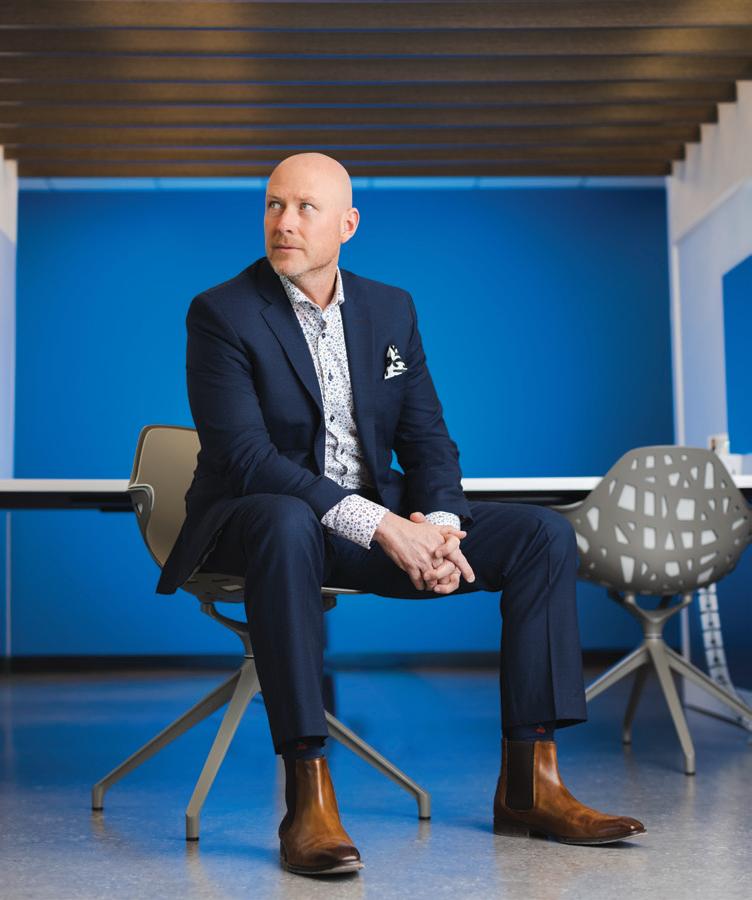
TECH TOOLS FROM QUANTUM WORKPLACE DRIVE SUCCESS
Building a feedback culture is not easy, but it’s essential, according to Quantum Workplace Founder and CEO Greg Harris. It requires a mindset, discipline, and muscle memory in order for your teams to recognize it.
Harris and his team work with human resource departments nationwide, including places like Domino’s, DSW, Scooter’s, Redfin, and more.
Research shows that when employees receive more frequent feedback, they’re two times more engaged, three times less likely to apply or seek other jobs, and 1.4 times more likely to stay at an organization.
The tech company offers a suite of AI-powered performance software tools to amplify effective employee engagement and performance management efforts.
Feedback builds trust, and that happens through employee listening provided via Quantum Workplace’s engagement and pulse surveys.
Employee engagement is defined as “strength of the mental and emotional connection employees feel toward the workplace.”
“Pulse surveys are topical, point-in-time surveys that happen year-round and are driven by real-time needs. We don’t want to begin solving a problem until we better understand what the problem is,” Harris said.
“It’s why every time you go to Panera, you know, on your receipt you have a survey card. The smarter an organization is about their perceptions of who their customers are, the better it’s going to be able to meet their needs. The smarter an organization is about what their employees’ thoughts and feelings are, the more they’re going to be able to meet their needs,” Harris said.
Quantum Workplace makes it easy to measure what matters, and keeps things simple for companies to create and launch a survey. It was named by Inc. Magazine as one of the fastestgrowing private companies for the past six years.
Additionally, Harris, who hands the CEO role to Joe Holland this month, invented the “Best Places to Work” contest that is ran in partnership with various local businesses, and held in 43 regional markets and five industry-wide markets.
When a team conducts an annual employee engagement assessment, they’ll receive hundreds of opinions, and normally, a few themes will rise to the top.
“If I can hone in all my employees on those one or two things, then I’m increasing the trust that they have. I’m increasing the visibility that we have over what matters most.”
He says that companies begin to understand the feeling of winning when their engagement levels are at around 80% in other words, the sweet spot.
“You feel that. An organization feels that difference when they’re at 80. It feels like you’re winning,” Harris said. “There’s just more energy. There’s more joy. You see it in the results.” Employees feel connected to the company’s mission, goals, and values.
Relationships and consistency are key drivers of success. The recipe to becoming a company with top quartile employee engagement levels is a mix of very relational concepts, he said.
“It’s the relationships that managers have with their employers. It’s the quality of the communication that comes in flow throughout an organization, from senior leaders to middle managers, to individual contributors,” Harris said. Consistency in every chat, email, or meeting every day is a difference-maker.
Of the 11,000 companies that Quantum Workplace collects annual engagement data from, Harris recognizes an overall trend. “We’re kind of in a no-man’s land, kind of this ‘meh’ period,” he said.
“Three years ago, engagement was at all-time highs, according to our metrics. About 80% of the American workplace was of a high level of engagement,” he said.
CONT. PAGE 37

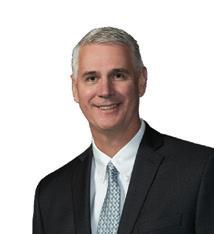

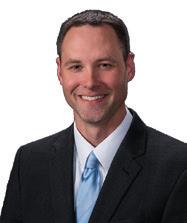

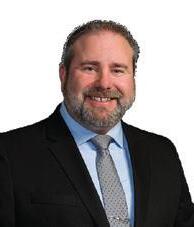


















Contextually, he said American employees right now (as of April 2025) are engaged at around 74.5%. “We’re not at all-time lows, we’re not at all-time highs, but sometimes that’s the sticky middle.”
He continued, “When you’re at all-time lows, everybody rallies…when you’re at an all-time high, again, you get a little comfy and cozy, and employees start asking for free pet insurance and more ping-pong tables.”
Engagement drives advocacy. You see it when your employees rave repeatedly about their valued workplace to anyone within hearing distance.
Committed employees also drive effort to go the extra mile. “Do they have the agility? Do they have the perseverance to keep focused, to keep committed, even when something isn’t going perfectly, even when they get some bad feedback at work, even when the success metrics aren’t quite where they want?”
Simply put, engaged employees aren’t quiet quitting, nor do they plan to leave anytime soon. Resenteeism, when employees show up to work physically, but mentally they’re elsewhere, would never cross an engaged employee’s mind.
Harris acknowledges that it’s so much more fun to work in a crowd of happy people, but you could also have happy people that are disengaged.
“There are times when we love our work, we admire our work, we respect the process, but we also see it as work, and we know that it’s not all lollipops and rainbows, but we respect that,” he said.
Harris recently advised a CEO who felt something was off at his company. They had recently implemented reduction in forces (RIF) at the manager level.
Retention was declining while turnovers were climbing. “More people are quitting and we just feel like we’re in a funk,” the CEO told Harris.
So, what was wrong? When employees lose the person they were getting coaching from, it causes a reduction in relational equity, he said.
The most successful businesses have leaders who continually communicate the purpose and vision of their organization.
Harris’ advice to the struggling CEO? “Increase the frequency with which you are communicating strategy, because you can’t rely on as many managers anymore to funnel that information down.You should not assume that those 1,200 employees know what matters and what’s most important today,” he said.
“We need consistency of trust, visibility from senior leaders, and communication talent. Those are the ingredients. At the end of the day, this quantitative thing called employee engagement is a report card on leadership effectiveness,” Harris said. B2B OMAHA
For more information, visit quantumworkplace.com.


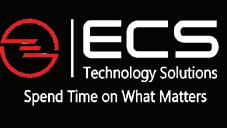


Knapp Financial Services was a solo venture when Steve Knapp started it 18 years ago. Today, Steve serves in dual roles as Managing Director with Guardian, where he manages their Omaha branch office, while also serving individual clients as they migrate into retirement. Knapp has a team of six advisors, one of whom is bilingual.
“Culture is very important. We treat our clients and employees like family. We are focused on relationships. Our clients are more than just a number. In other words, they are not characterized by the investable assets within their portfolio. We help everyone!” said Knapp.
Steve is down-to-earth. He’s worked hard to get where he is in life and appreciates the clients he works with. Unlike most advisory firms, they don’t have account minimums, which means he and his team are willing to help anyone with financial planning, retirement planning, or wealth management.
“I didn’t come from money; I’ve built everything I have. I can also relate to the needs of small business owners because I am an Omaha business owner and have been for many years,” said Knapp.
Knapp lives in Elkhorn with his wife and two kids. He’s a member of Life Church and part of both the West Omaha and Sarpy County Chambers. He’s also been an active member of the community, coaching youth sports.
Knapp entered the financial services industry at 23 years old, owning a Chicago-based firm which designed client acquisition strategies for banks. He later worked with a couple of high-profile investment firms before opening his office in West Omaha.
“We place a heavy focus on education. As a matter of fact, we host social security lunch & learns, as well as no-cost, on-site corporate education to company HR directors who request it,” added Knapp. “We believe firmly in catering our services to the individual needs of each client, whether that be an organization or an individual.”
“When you work with a small, local firm, you have access to intimate service, but with us you also have access to the corporate resources of a Fortune 500 company.” Knapp said.
Another aspect that makes Knapp different is his Dave Ramsey affiliation. There are only 10 Advisors in the state of Nebraska that carry Dave Ramsey’s
endorsement. “The principals that I utilize align with Ramsey’s SmartVestor program,” said Knapp.
Guardian is a New York-based life insurance company that has consistently appeared on the Fortune 500 list, ranking among the largest companies in the U.S. It was ranked 252 on the Fortune 500 list in 2024.
To set up a free consultation, contact Steve:
GUARDIAN 16820 FRANCES ST. #200 OMAHA, NE 68130
402.510.2870 STEVE.KNAPP@GLIC.COM KANSASCITY.GUARDIANLIFE.COM/ TEAM/STEVE-KNAPP
Registered Representative of Park Avenue Securities LLC (PAS). Securities products and advisory services offered through PAS, member FINRA, SIPC. Financial Representative of The Guardian Life Insurance Company of America® (Guardian), New York, NY. PAS is a wholly-owned subsidiary of Guardian. Guardian, its subsidiaries, agents, and employees do not provide tax, legal, or accounting advice. Consult your tax, legal, or accounting professional regarding your individual situation. Guardian, its subsidiaries, agents, and employees expressly disclaim any responsibility for and do not maintain, control, recommend, or endorse third-party sites, organizations, products, or services, and make no representation as to the completeness, suitability, or quality thereof.

Matt and Ben Tompkins didn’t set out to build a production empire. They just wanted to make people laugh. What started in their dad’s church basement as a sketch comedy show Omaha Live became a surprise hit on NBC, airing after Saturday Night Live. But even with TV success, the brothers were still broke.
Matt returned to his roots in radio, hosting local and national shows, while the dream simmered on the back burner. Then, in October 2020, he took a leap 100% in on himself and reignited Two Brothers Creative.
Today, Two Brothers Creative is Omaha’s premiere audio and video podcast production company. But they’re more than just a studio. They’re storytellers who believe that content isn’t just king it’s the whole kingdom. In an era where trust is built online, they help businesses create content that connects, educates, and inspires.
Their “Midwest Mindset” drives everything: help people first, and success will follow. That authenticity has made all the difference.
From sketch comedy to serious strategy, Matt and Ben turned a passion project into a powerhouse. And they’re just getting started one piece of content at a time.
Because when your story is real, people listen. TWO
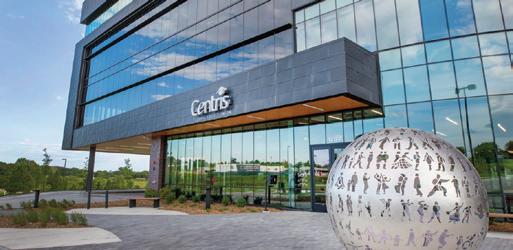

Founded in 1934, Centris Federal Credit Union is a full-service credit union, with services ranging from checking and savings to auto loans, mortgages, business banking, and more.
Over the past 91 years, Centris has grown to over $1 billion in assets, supporting a community of more than 135,000 members with nearly 350 employees across 14 branch locations in Nebraska and Iowa.
As a credit union, Centris embraces the philosophy of people helping people. In 2024, Centris employees donated over 1,900 hours of volunteer time, and Centris invested over $250,000 in the communities it serves.
No matter their members’ needs, goals, or financial situation, Centris is where they are!
• centrisfcu.org


Nebraska Executive IT
Leadership Forum 2025
June-September 2025 515.288.2128 —paragonitpros.com/neleaders
Next Sales Forum
June 2-5
—seniormarketsales.com/sales-forum
Cocktails & Culture
June 3 | 4:30-6:30 p.m.
Hotel Deco 1504 Harney Street 402.346.5000
Jamie Johnson, jjohnson@omahachamber.org —omahachamber.org/
25th Anniversary—
Brookestone Village
June 4 | 4-6 p.m. 4330 South 144th Street memberservices@omahachamber.org —brookestonevillage.com
Young Professionals Showcase
June 4 | 5:30-7:30 p.m. Kutak Rock LLP 1650 Farnam Street 402.640.1365 mbrtek@omahachamber.org —omahachamber.org/yp/
Fundraising Palooza
June 5 | 8 a.m.-4 p.m.
Scott Conference Center 6450 Pine St. 402.557.5800 abbyh@nonprofitam.org —nonprofitam.org/ events/2025-fundraising-palooza-omaha
Business Excellence Awards
Community Celebration
June 10 | 4:30-6 p.m.
2558 Farnam Street 402.346.5000 events@OmahaChamber.org —omahachamber.org/excellenceawards/
Cash Mob: Spin! Pizza
June 11 | 3 p.m.-5 p.m.
Spin! Pizza Papillion
248 Olson Drive chamber@sarpychamber.org —sarpychamber.org/events
Coffee & Contacts
June 12 | 8-9:30 a.m.
Outlook Enrichment 4125 S. 72nd Street chamber@sarpychamber.org —sarpychamber.org/events
Summer Mind Candy Dialogue
June 12 | 7:15-9 a.m.
Location TBD
Jessica Schaaf, jschaaf@businessethicsalliance.org —businessethicsalliance.org
After Hours
June 12 | 4-6 p.m.
Forsman’s Finest Decks 20205 Park Road 402.289.9560 info@westomahachamber.org —westochamber.org
Contractor Coalition Summit + Alumni Reunion
June 19-24
Kimpton Cottonwood Hotel 302 S. 36th St. —contractorscoalitionsummit.com
Coffee & Contacts
June 26 | 7:30-9 a.m.
Topgolf Omaha 908 N. 102nd St. jjohnson@omahachamber.org —omahachamber.org
Tech Omaha Summer Party Happy Hour
June 26 | 5-9 p.m.
Slowdown 729 N. 14th Street michael.struthers1@gmail.com —techomaha.com
The Church Network Conference 2025—The Good Life July 15-17
CHI Health Center 455 N. 10th Street 800.898.8085
info@thechurchnetwork.com —thechurchnetwork.com/Conference
FutureCon Cybersecurity Event
August 14
Doubletree by Hilton Hotel Omaha Downtown 1616 Dodge Street 314.797.7210 info@futureconevents.com —futureconevents.com/
Event times and details are correct as of press time, but are subject to change.
B2B Omaha encourages readers to visit venues’ websites and/or call ahead before attending an event.

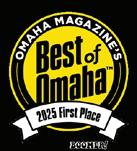




Redefine your office with Beyond Walls by Allsteel. These innovative wall systems offer acoustic privacy, modern design, and adaptability for evolving workplaces. Perfect for creating collaborative or quiet spaces, Beyond Walls combines functionality with sleek, sustainable style. Let All Makes help you build smarter, more flexible environments. VISIT ALLMAKES.COM TO SCHEDULE A CONSULTATION